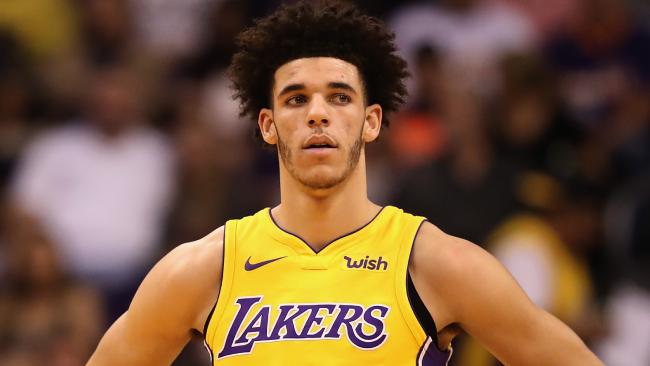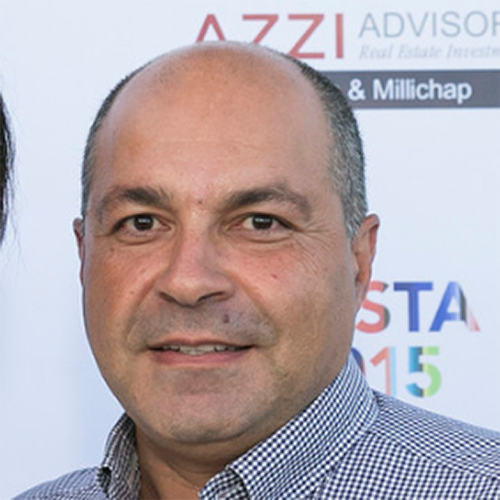
Lonzo Ball: Magic Johnson said this will be ‘biggest summer’ of my life
April 16, 2018
LOS ANGELES PLASTIC BAG BAN TO EXPAND TO SMALLER GROCERY STORES ON TUESDAY:
April 25, 2018Beverages & Snacks Dominate 2017’s Most Successful C-store New Products
Article Published by: csnews.com
Beverages and snacks dominated the top 10 most successful new products in the convenience store channel, according to the 2017 New Product Pacesetters report, the consumer packaged goods (CPG) industry-recognized benchmark analysis of first-year new product sales success from IRI.
In the c-store arena, median year-one sales across the top 10 IRI New Product Pacesetters were $31.7 million, demonstrating the power behind consumers’ ongoing quests for indulgent, on-the-go experiences, the data and analytics firm stated.
Most of the top 10 products in this channel in 2017 were beverages; however, categories have begun to blend and blur. For example, energy drink brand Monster Beverage Corp. launched Monster Mutant Super Soda, a carbonated soft drink. Conversely, carbonated beverage Mountain Dew Black Label developed packaging that looks very similar to energy drink cans.
All of the top 10 convenience channel Pacesetters are pure indulgence products (except for bottled water), which reflects consumers’ ongoing desire for healthier-for-you indulgences, according to IRI.
“Innovating to meet core needs and wants is crucial to ensuring new product success, but the challenge doesn’t end there. For a new product to be truly successful, it is up to marketers to ensure that the product — and messaging — are where the shopper is, when the shopper is ready to buy,” said said Susan Viamari, vice president of Thought Leadership for IRI.
“Through big data and advanced analytics, CPG marketers do have visibility into where shoppers go to learn about new products, as well as into what the highest-potential retail banners are, and even where the highest potential locations exist within each of these banners. By understanding key shoppers — what they want, where they go to learn about products and where they go to try new brands — marketers can influence purchase decisions with messaging and assortment that drive sales,” she added.
NEW BRANDS ON THE SCENE
Thousands of new brands hit retail shelves during 2017, with 49 percent of the top-ranking brands hailing from small manufacturers — defined as those earning less than $1 billion annually — and accounting for 26 percent of Pacesetter dollars.
Overall, the top-selling 200 new brands captured cumulative year-one sales of more than $4.6 billion.
“Consumers are demanding products that are customized to their needs, and this type of targeted innovation continues to put small and niche companies on the New Product Pacesetter map,” said Viamari. “Just five years ago, an estimated nine out of every 10 Pacesetters launched were extensions of existing brand lines. In 2017, 40 percent of food and beverage and 25 percent of non-food Pacesetters were brands entirely new to the CPG marketplace. This clearly demonstrates consumers’ willingness to try ‘unknown’ brands. Millennials, in particular, are more moved by experiences and solutions to their needs and less likely to purchase based solely on brand name.”
Larry Levin, executive vice president of consumer and shopper marketing for IRI, added: “Smaller, more targeted product launches have become the new norm in CPG aisles, as manufacturers look to enhance impact with launches that align more closely with key consumer needs and wants. In a testament to the power of this shift, 20 percent of this year’s top-selling launches earned less than $10 million during their first year on the shelves, continuing a trend we found in last year’s analysis.”
FOOD AND BEVERAGE LAUNCHES
For the top 100 food and beverage champions, median year-one sales were $14.5 million, excluding outlier Halo Top, which earned year-one sales of $342.2 million (ranked No. 1).
All of the top 10 New Product Pacesetter brands were new market entrants, though many of these benefited from the equity their manufacturers already enjoy in the marketplace, like Dunkin’ Donuts Iced Coffee (No. 3), Nestlé Splash (No. 4) and Hershey’s Cookie Layer Crunch (No. 7), according to IRI.
While frugal, millennials will spend on things that matter to them. Of the 20 largest 2017 Pacesetter brands, 85 percent command a price premium compared to their respective category averages. PepsiCo’s LIFEWTR (No. 5), for instance, sells at a significant premium compared to other convenience/still waters. The brand hit strong in the market as a purified water, pH-balanced with electrolytes added for taste.
Millennials are also embracing wellness and self-care to ward off ailments. Campbell’s Well Yes! Soup (No. 9) meets this demand by featuring clean, simple and nutritious ingredients to make healthy eating quick and easy.
However, no matter how health-conscious consumers become, there is always room for sweets and treats. Overall, candy and gum accounted for 9 percent of food Pacesetter dollars, which is in line with trends seen during the past five years.
In the dinner sector, the largest launch was SmartMade by Smart Ones (No. 6), a frozen meal inspired by ingredients and cooking techniques used at home. Eighteen of the 76 food Pacesetters are breakfast solutions, which cater to consumers at both ends of the wellness spectrum by offering both indulgent flavor experiences, such as Kellogg’s Cinnamon Frosted Flakes (No. 19) and healthier, on-the-go options, like Jimmy Dean Delights Frittatas.
NON-FOOD CHAMPIONS
On the non-food side, median year-one sales inched up just slightly to $17.8 million from $17.6 million, bolstered by the slight uptick in the number of brands earning $40 million to $59 million. Brands in this range are primarily higher-ticket general merchandise items, such as cookware and hair-styling tools.
According to IRI, co-branded solutions are bringing the benefits and experiences together in one convenient solution. Tide Simply Plus Oxi, for instance, fights stains and odors with twice the Oxi fighting power so there’s no need to pretreat and clothes are infused with a fresh, clean scent.
Cosmetic and hair care products are also demonstrating the power of fusing benefits to enhance the value proposition. Maui Moisture, for example, is a hair care line that heals and hydrates. The line is gluten-, paraben-, and silicone-free, starting with 100-percent aloe juice and coconut water.
Robert Munakash is a native to Los Angeles, CA. He grew up in the gas station and real estate business, purchasing his first gas station in 1995. Munakash is the owner of Pacific West General 76 in Pacific Palisades, CA. He is also an active member of Pacific Palisades Chamber of Commerce.

Owner at Pacific West General Store, Inc. Pacific Palisades, CA.
Address: 17299 Pacific Coast Hwy. Pacific Palisades, CA 90272
tel: 310-459-7645
email: rmunakash@aol.com
Excellent management skills and experience. Strong practical and theoretical foundation in sales through marketing, advertising, and customer service. Proven success in implementing productivity-enhancement systems.


